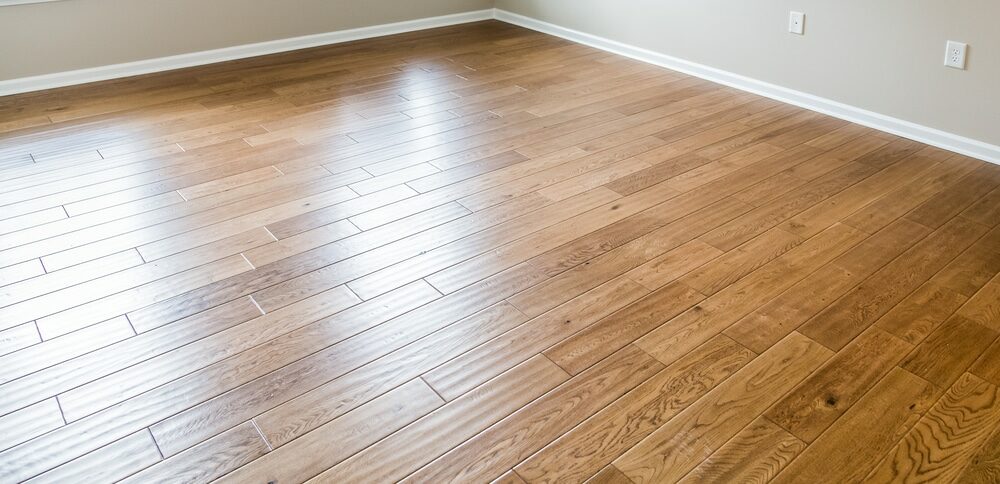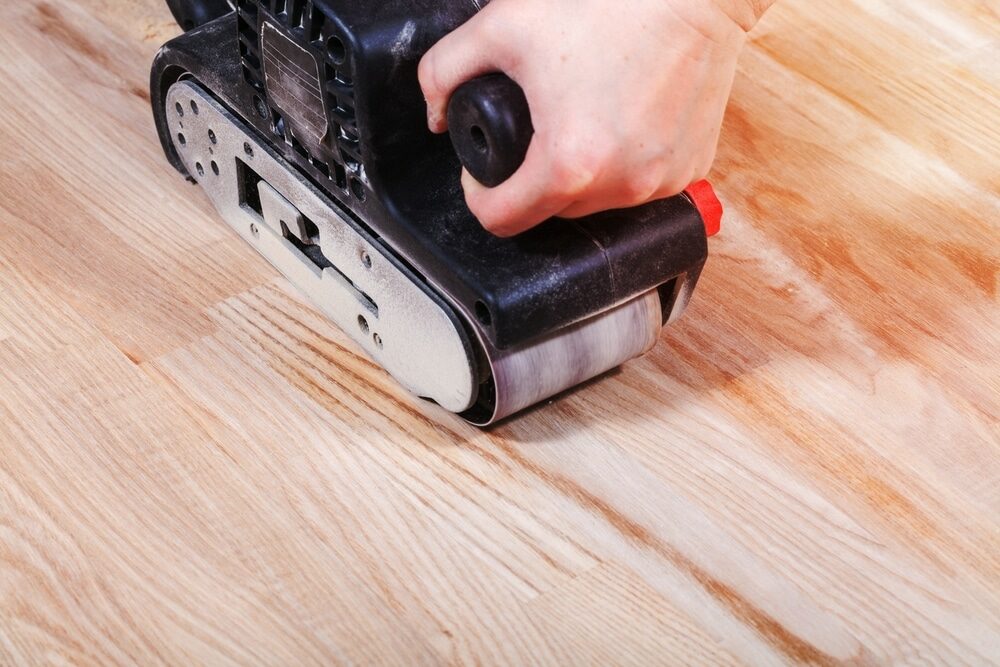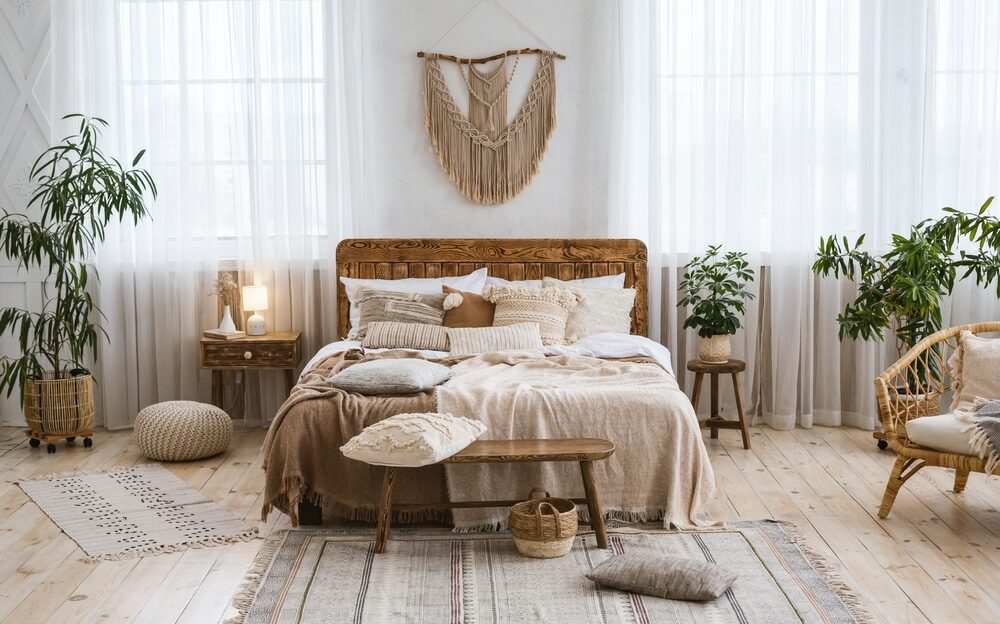London:
Nationwide:
Wood Floor Protection Essentials: A Comprehensive Guide
Posted on April 25, 2023
News
The Ultimate Guide to Wood Floor Protection: Preserve and Maintain Your Beautiful Hardwood Floors
Hardwood floors are a timeless and elegant addition to any home, with their natural warmth, beauty, and durability. However, to maintain their stunning appearance and prolong their lives, it’s essential to know how to protect and care for them properly. In this comprehensive guide, we’ll delve into the fundamentals of wood floor protection. We’ll cover everything from cleaning and maintenance to selecting appropriate floor protectors and addressing common issues. By the end of this article, you’ll have all the tools and knowledge you need to keep your wood floors looking pristine for years to come.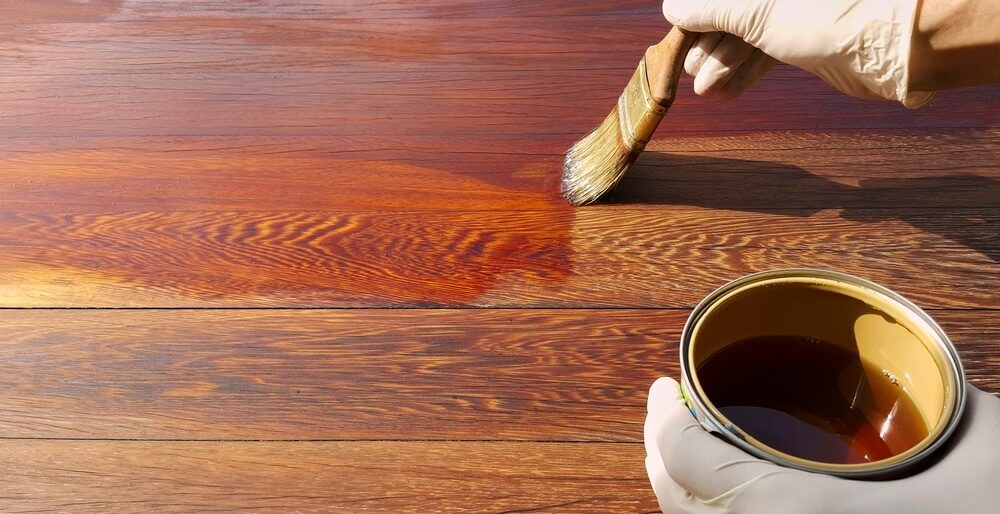
Section 1: Understanding the different wood floor types
Before discussing protection strategies, it’s crucial to understand the different types of wood flooring available, as each requires specific care. Generally, there are three main categories: solid hardwood, engineered hardwood, and laminate. 1.1. Solid Hardwood Solid hardwood floors are made from a single piece of wood, making them the most traditional and durable option. They can be sanded and refinished multiple times, ensuring a long lifespan. However, they’re more susceptible to moisture and temperature fluctuations, so extra care is needed in their maintenance. 1.2. Engineered Hardwood: Engineered hardwood floors consist of a real wood veneer adhered to a plywood or fibreboard base. This construction makes them more stable and less prone to warping in humid conditions. While they can be sanded and refinished, this can only be done a limited number of times due to the thinner top layer. 1.3. Laminate: Laminate flooring is a synthetic product that mimics the appearance of wood. It features a photographic layer over a high-density fibreboard core and is protected by a wear layer. Laminate is affordable and easy to maintain, but it cannot be refinished like hardwood floors.Section 2: Cleaning and Maintenance
Proper cleaning and maintenance are essential to protecting your wood floors and keeping them looking their best. By following these simple steps, you’ll ensure your floors remain in top condition.
2.1. Regular cleaning
- Sweep or vacuum your floors daily to remove dirt and debris that can scratch the surface.
- Use a soft-bristle broom or a vacuum with a hardwood floor attachment to avoid damage.
- Avoid using a standard vacuum cleaner with a beater bar, as this can scratch the wood.
2.2. Mopping
- Damp mop your floors at least once a week, using a microfiber mop and a cleaning solution specifically designed for wood floors.
- Avoid using excessive water, as this can cause warping or swelling.
- Never use steam mops, as the heat and moisture can damage the finish and the wood itself.
2.3. Preventive Measures
- Place doormats at entryways to catch dirt, grit, and moisture from shoes.
- Use area rugs in high-traffic areas to minimise wear and tear.
- Attach felt pads to the bottom of furniture legs to prevent scratches and dents.
- Keep pet nails trimmed to reduce the risk of scratches.
- Avoid walking on your floors with high heels or other sharp objects that can dent the surface.
Section 3: Choosing the Right Floor Protectors
The right floor protectors can make a significant difference in preserving your wood floors. There are several options to consider, each with its own benefits. 3.1. Furniture Pads Furniture pads are a must-have for any wood floor owner. They come in various materials, such as felt, rubber, or cork, and can be easily attached to the bottom of your furniture legs. They not only protect your floors from scratches and dents but also make it easier toSection 4: Addressing Common Wood Floor Issues
Even with proper care, wood floors can develop issues over time. Here are some common problems and how to address them: 4.1. Scratches Minor scratches can often be remedied using a wood floor repair kit or a touch-up pen designed to match your floor’s finish. For deeper scratches, you may need to sand the affected area and reapply the finish.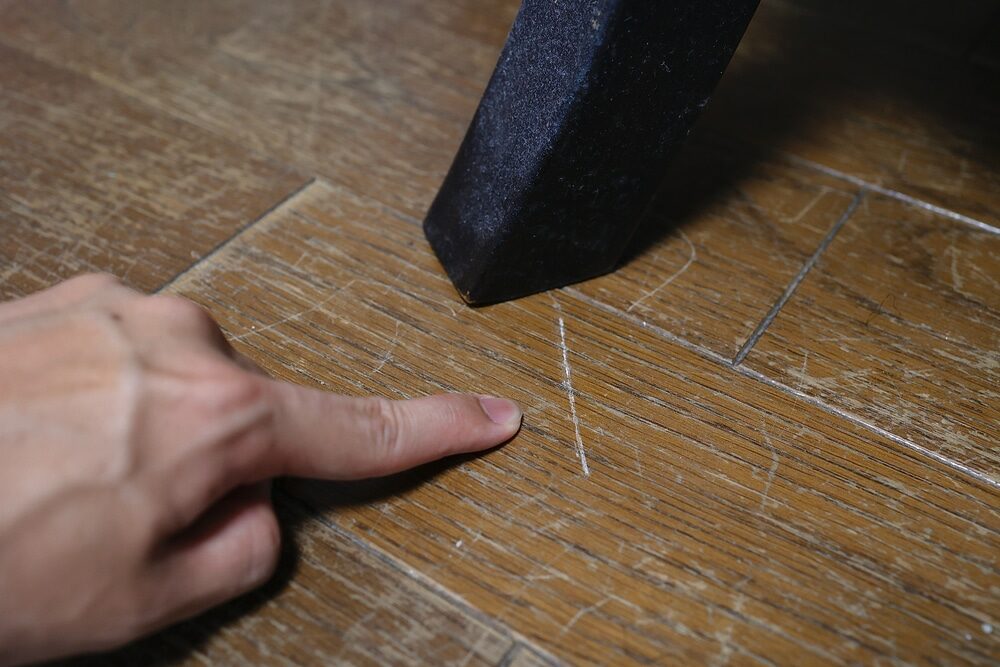 4.2. Dents Dents can be more challenging to repair, but one method involves using an iron and a damp cloth. Place the damp cloth over the dent, and then apply the iron to the cloth for a few seconds, allowing the steam to penetrate the wood. This process can help the wood fibres swell and reduce the dent’s appearance. Finish by sanding and refinishing the entire area if needed.
4.2. Dents Dents can be more challenging to repair, but one method involves using an iron and a damp cloth. Place the damp cloth over the dent, and then apply the iron to the cloth for a few seconds, allowing the steam to penetrate the wood. This process can help the wood fibres swell and reduce the dent’s appearance. Finish by sanding and refinishing the entire area if needed.
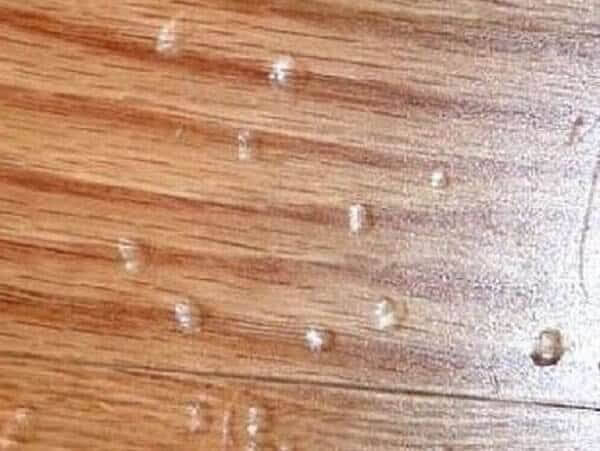 4.3. Water Damage If your wood floor has suffered water damage, it’s essential to address it as soon as possible. Remove any standing water and use fans or a dehumidifier to dry the area quickly. Depending on the extent of the damage, you may need to sand and refinish the affected area or replace the damaged boards.
4.3. Water Damage If your wood floor has suffered water damage, it’s essential to address it as soon as possible. Remove any standing water and use fans or a dehumidifier to dry the area quickly. Depending on the extent of the damage, you may need to sand and refinish the affected area or replace the damaged boards.
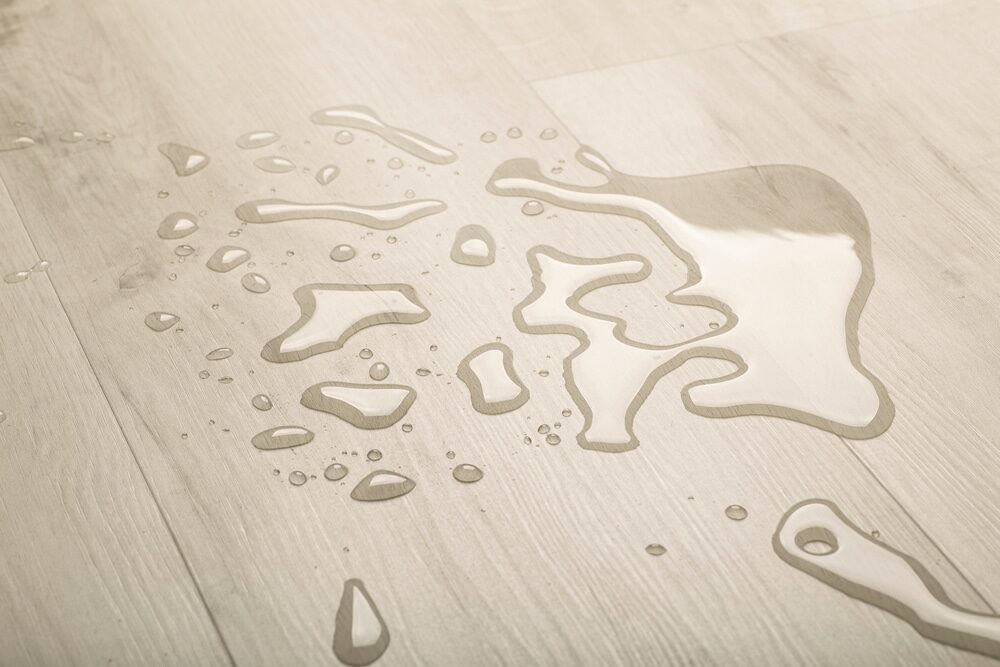 4.4. Gaps Gaps between boards can occur due to seasonal changes in humidity. While some degree of gapping is normal, significant gaps may require professional intervention (resin, slivers or silicon gap master) to re-install or replace the affected boards.
4.4. Gaps Gaps between boards can occur due to seasonal changes in humidity. While some degree of gapping is normal, significant gaps may require professional intervention (resin, slivers or silicon gap master) to re-install or replace the affected boards.
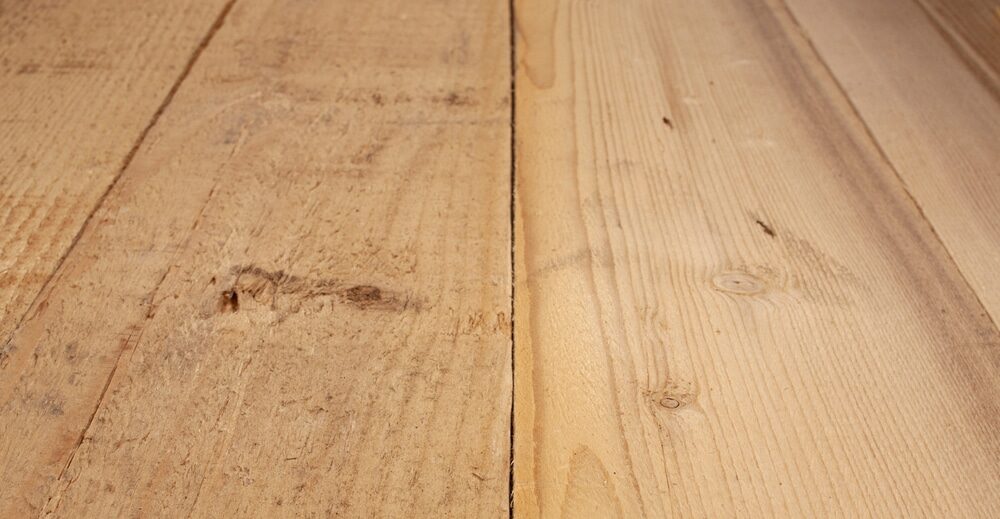 4.5. Fading Sunlight can cause wood floors to fade over time. To minimise fading, use window coverings like blinds, shades, or curtains to block direct sunlight. You can also apply a UV-resistant finish to protect your floors.
4.5. Fading Sunlight can cause wood floors to fade over time. To minimise fading, use window coverings like blinds, shades, or curtains to block direct sunlight. You can also apply a UV-resistant finish to protect your floors.
Some Useful Links:
Conclusion
Wood floor protection is essential to maintaining the beauty and longevity of your investment. By understanding the different types of wood flooring (boards, parquet & hardwood), following proper cleaning and maintenance procedures, and selecting appropriate floor protectors, you can keep your floors looking their best for years to come. Additionally, addressing common wood floor issues promptly can prevent more significant damage and help maintain your floors’ pristine appearance. With proper care and attention, your wood floors will continue to be a stunning and timeless feature in your home. Remember, the key to preserving your wood floors lies in a proactive approach to protection and maintenance. Equip yourself with the right tools, knowledge, and practises to ensure your wood floors remain a source of pride and enjoyment for years to come.More from our Blog:
How to Educate Yourself With Basics Of Wooden Floor Sanding? The Art and Science of Wood Floor Restoration: The Experts Guide Step By Step Guide to Dustless Floor Sanding | Revive Your Floors
Sanding
We provide virtually dust-free sanding with our continuous belt machinery with mobile extraction units, giving you a safer environment for your family.
Oiling
This organic finish not only adds beauty to your home but also has exceptional water-repellent characteristics, making it easier to clean and maintain.
Waxing
This natural floor finish offers the softest and most mellow appearance – and leaves your floor able to breath.
Buffing
Using soft buffing machines (and hand-polishing where required) will bring a wonderful sheen to your newly-finished floor.
Repairs
We offer a full assessment of your wooden floors to determine what repairs are needed to provide the perfect working surface for the later stages of sanding, staining and sealing.
Restoration
We offer a comprehensive restoration process designed to address floors that are improperly fitted or damaged over time through wear and tear.
Request a fixed price quote for your wood floor restoration now
Simply enter your postcode below to get started.
Services
Wood Floor Sanding Wood Floor Restoration Wood Floor Scratch Repair Squeaky Wood Floor Repair Parquet Floor Sanding Parquet Floor Restoration Commercial Floor Sanding Church Floor Sanding Community Centre Floor Sanding School Floor Sanding Gap Filling Gap Filling with ResinCopyright © Mr Sander®
Privacy & Cookies Terms & Conditions Complaints Procedure Cancellation Rights Sitemap